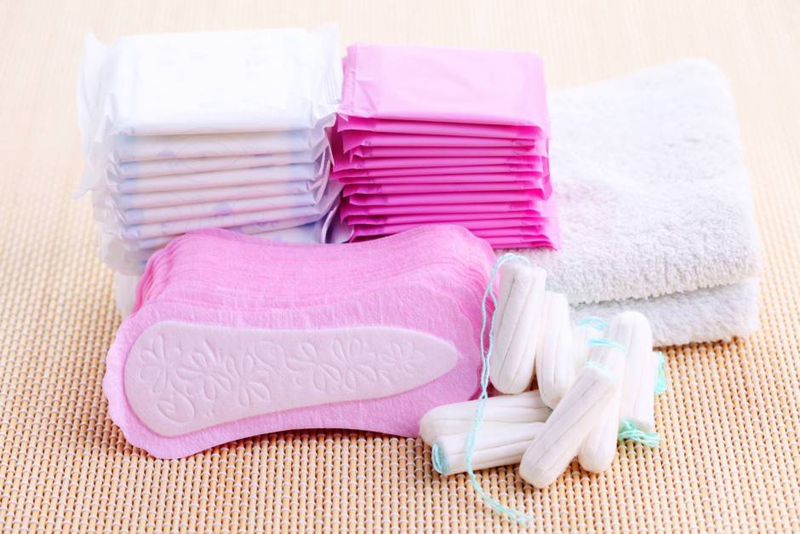Whether you have delivered vaginally or undergone a C-section, you are likely to experience bleeding after delivery. It could be as heavy as it is when you have your period. This may continue until the lining of the uterus is renewed. Also called lochia, vaginal bleeding after birth can be quite annoying and may last for 2-6 weeks after birth. It can also vary in color from time to time. Let's find out more about it.

Is It Normal to Bleed After Delivery?
Yes, it is common for women to lose some blood during and after they have delivered.
In fact, you may have a very heavy period a few days after delivery. You do not have to worry about it too much because your blood volume rises about 50% than normal during pregnancy, so the blood loss is not going to cause serious complications.
After the placenta separates from the uterus, open blood vessels in this area begin to bleed into the uterus. Even after delivery, the uterus keeps contracting to close off those open blood vessels, which in turn helps reduce the bleeding. However, you may continue to experience bleeding if you get an episiotomy or tear during birth – you may bleed from that site until it is stitched up.
To stop the bleeding after delivery, your doctor may give you synthetic oxytocin and even massage your uterus in a way that will help it contract. Breastfeeding also plays a role because it raises levels of oxytocin in your body and helps your uterus to contract. In rare cases, some people experience a postpartum hemorrhage, which means the uterus fails to contract properly after delivery, causing an excessive blood loss.
How Can I Tell If I Am Bleeding Too Much?
You will have lochia after delivery – it starts immediately after you give birth. It usually takes a week for the discharge to turn pinkish. In about 10 days, the discharge will become white or yellowish. The lochia may last for about 2-4 weeks; however, it is likely to come and go for about two months.
Keep in mind that you should take some rest after delivery because red lochia can become heavy with a lot of activity. If you notice bright red blood after lochia has lightened, it means you should reduce your level of activity.
Here are a few tips to help you determine the harshness of your bleeding:
You are experiencing severe bleeding if you have to change pads every hour for two or more hours or if your lochia is still bright red four days after your delivery.
You have moderate bleeding if you soak more than one pad or tampon in 3 hours.
You have mild bleeding if you soak less than one tampon in more than 3 hours.
You have minimal bleeding with you notice a few drops of blood only.
You may be experiencing postpartum infection if your lochia has a foul smell or you have fever or chills.
You may be experiencing late postpartum hemorrhage if you have abnormally heavy bleeding or have blood clots bigger than a golf ball.
What Can You Do About the Bleeding?
Avoid Using Tampons too Early
You may only need to stock up on maternity pads in the beginning. Usually, 2-3 packs of maternity pads do the job. You should avoid using tampons for the first six weeks at least after delivery to lower your risk of developing a bacterial infection.
Pay Attention to Personal Hygiene
Even if you have to change a pad every hour, do it. Things will become easier in the coming days, so do not make any compromises about maintaining good personal hygiene – wash your hands before and after changing your pads. It is also a good idea to take a shower every day, which will help keep your wound around the perineum clean as well.
Avoid Wearing Your Favorite Clothes
You should be going for clothes that you do not really like so you will not feel bad even if spotting stains ruin them.
When to Call the Doctor
While you usually do not need to do much other than just changing maternity pads during the first few weeks after delivery, it may be a good idea to consult your doctor in case bleeding after delivery is making you feel uncomfortable. Talk to your doctor if:
You notice that the discharge has an unpleasant odor.
You have fever or chills.
Your bleeding does not improve and stays as red as it was during the first week.
You notice your stomach become tender down low on both sides.
Your bleeding becomes heavy for no apparent reason – it means you soak up more than one maxi pad in one hour.
Your bleeding seems to become heavier and bright red four days after you give birth.
You have heavy bleeding and pass large blood cloths – a large clot is usually larger than a 50-pence piece.
You have dizziness and feel lightheaded.
You have fast heartbeat or experience palpitations.
View All Comments /Add Comment